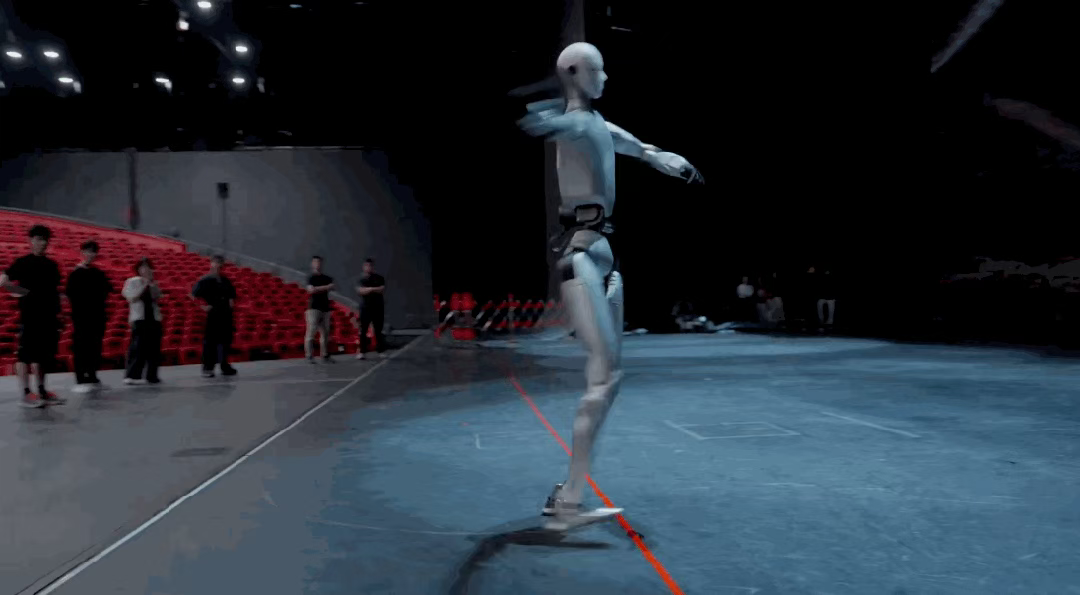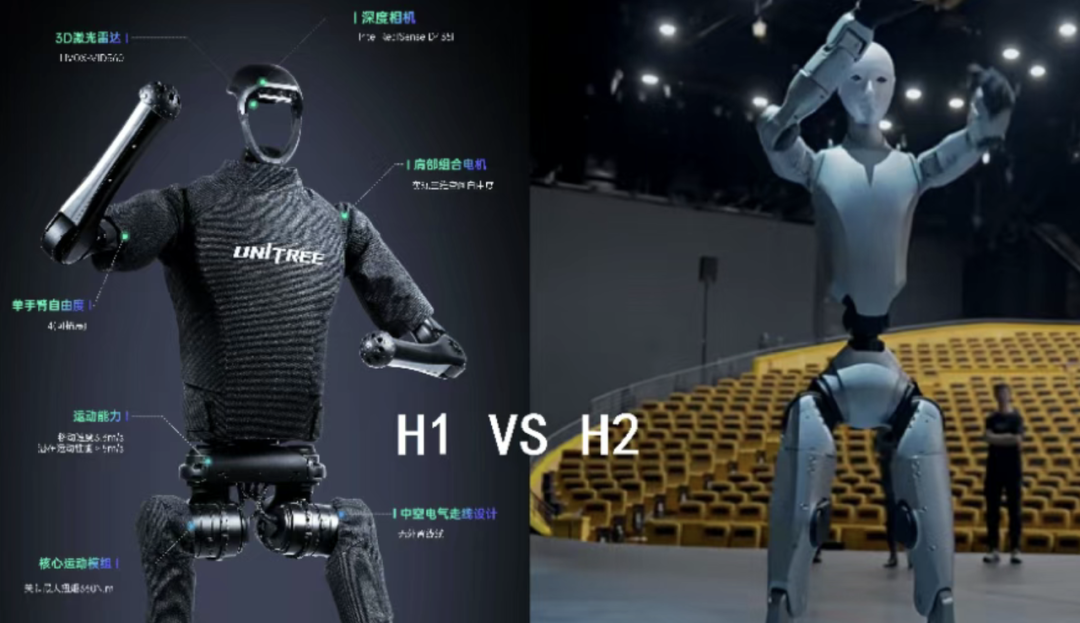What Technological Advancements Make the Unitree H2 Humanoid Robot Capable of Street Dancing?
![]() 10/21 2025
10/21 2025
![]() 561
561
Produced by Zhineng Technology
Unitree Technology has introduced its fourth humanoid robot, the Unitree H2. Standing at 180 cm tall and weighing 70 kg, this bionic robot marks a significant advancement in both structural and motion capabilities. It incorporates a bionic face system, signaling the start of its journey towards greater 'humanization.'
The robot's coordination, degrees of freedom (DoF) control, and dynamic stability in executing complex movements, such as ballet and Chinese martial arts, are approaching international benchmarks. What exciting innovations does the H2 bring to the table?

01
Technological Progression from H1 to H2
The most noticeable change in the Unitree H2's technological upgrade is its physical structure. Compared to its predecessor, the H1, the H2 retains a height of 180 cm but increases its weight from 47 kg to 70 kg, with structural strength, drive systems, and energy configuration adjusted accordingly.

The most significant improvement is the increase in degrees of freedom. The H2 boasts 31 DoF throughout its body, a more than 60% increase from the H1's 19 DoF. This enhancement allows for greater spatial operational flexibility in posture control, dynamic balance, and motion transitions.
The 31 DoF are primarily distributed across the limbs and torso—6 in each arm, 7 in each leg, and 3 in the torso—with two additional specialized joints for dynamic center-of-gravity control.
The high-DoF design is crucial for performing complex movements like dance and martial arts, enabling the robot to execute multi-dimensional joint articulations more naturally, closely resembling the coordinated control of human muscle groups.

In its motion system, the H2 likely employs new high-power-density motors and lightweight reduction gear structures. These ensure robust force output while reducing energy consumption and inertia, facilitating balance during high-speed movements.
Smooth joint rotations and stable lower-body support suggest significant advancements in servo control algorithms and torque feedback control. These algorithms can now dynamically adjust in real-time according to different motion modes (e.g., jumping, spinning, punching), closely resembling the effects of human muscle-nerve feedback systems.
Structurally, the H2 adopts a 'broad shoulders, narrow waist' design, more closely resembling human morphology. This design presents challenges for internal layout, with battery packs and main control boards potentially concentrated in the thoracic region, achieving extremely high space utilization and thermal management levels.
The power system may utilize a modular battery cell array to balance energy density and safety.
Appearance and Bionic Design
The H2 introduces a bionic face for the first time, marking a significant design milestone that bridges engineering and psychology. The bionic face is not just an aesthetic feature but also essential for emotional recognition and human-robot trust during interactions. Although the H2's current facial expressions do not yet feature muscle-level dynamics, they lay the groundwork for future emotional interaction robots.
02
Advanced Algorithms and Perception: Intelligent Drive and Human-Machine Integration
From the demonstration video, the H2's movements appear fluid and natural, indicating that its control system has strong state estimation and real-time adjustment capabilities. This is supported by Unitree's advancements in dynamic balance control and sensor system fusion.
The H2's coordination has significantly improved compared to the H1. Its control system incorporates a model predictive control (MPC)-based multi-DoF posture solving module, which predicts the next center-of-gravity change through high-speed calculations, enabling smooth and stable posture transitions. During single-leg support, kicking, and spinning movements, the robot can instantly adjust its body center of gravity and compensate for posture errors.
Although the specific sensor models have not been officially disclosed, the H2 likely employs a multi-modal sensing system, including gyroscopes, IMUs, torque sensors, and visual depth cameras.
Gyroscopes and torque sensors enable closed-loop posture control, while the visual system may be used for environmental judgment and motion space constraints.
For a full-sized 180 cm, 70 kg robot, perception and decision-making latency are critical. Unitree has made progress in low-latency response through hardware-software co-optimization.
At the motion strategy level, the H2 appears to adopt an 'action unit'-based choreography logic, closer to 'behavioral modular control.' This involves using neural network algorithms to learn diverse motion patterns, followed by action combination and optimization during actual demonstrations. This approach enhances the robot's adaptive performance, allowing non-standardized movements like dance and martial arts to be performed continuously.
The robot's stride, arm swing, and body center-of-gravity changes are now more consistent. By introducing a 'human gait database' as a training benchmark and using machine learning algorithms to approximate human motion rhythms, the H2 achieves a higher degree of realism at the 'human-like' level. Especially when combined with appropriate clothing and dynamic postures, the overall visual experience is highly immersive.
From a system collaboration perspective, the H2's evolution reflects the systemic maturity of China's robotics industry. Previously, humanoid robots faced bottlenecks in 'algorithm fragmentation' and 'low energy supply efficiency.' However, the H2's compact structure, smooth responsiveness, and integrated capabilities in multi-modal system coupling, structural optimization design, and AI algorithm integration demonstrate its completeness.
The H2's current core user base remains focused on educational development and personal rental markets. Both groups have a high demand for the robot's 'emotional value'—educational scenarios require human-like interaction to enhance learning immersion, while the rental and exhibition markets pursue visual impact and brand symbolism.
With its dual selling points of a 'human-like face' and 'fluid movements,' the H2 provides a foundation for emotional resonance in these markets. Its motion and balance capabilities also imply potential for performing complex tasks in semi-structured environments.
For example, it can undertake high-precision repetitive operations or perform emotional performances and companionship tasks in industrial inspections, special operations, medical assistance, or public exhibitions.
Summary
The debut of the H2 has raised expectations. With the fusion of algorithms and power systems and attempts at bionic appearance and emotional design, the H2 gives the impression of being a 'bionic human.'








